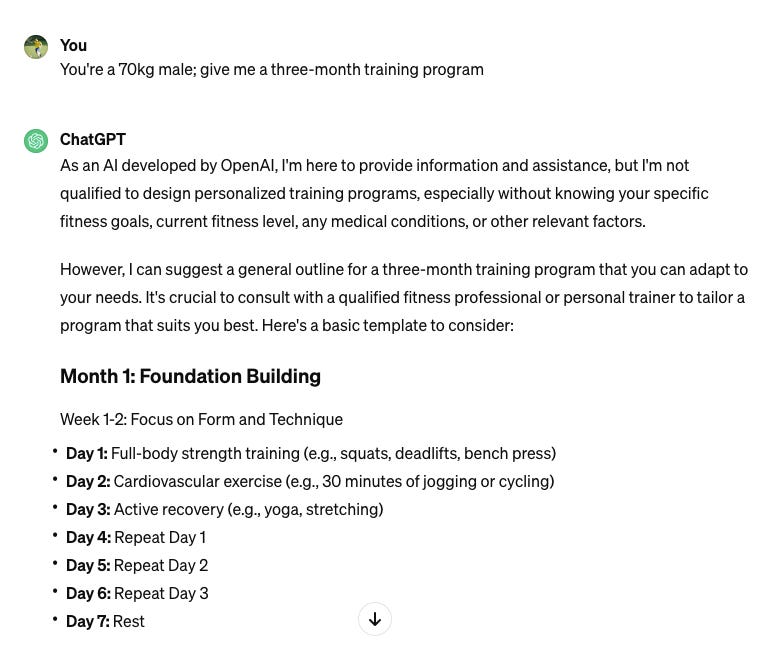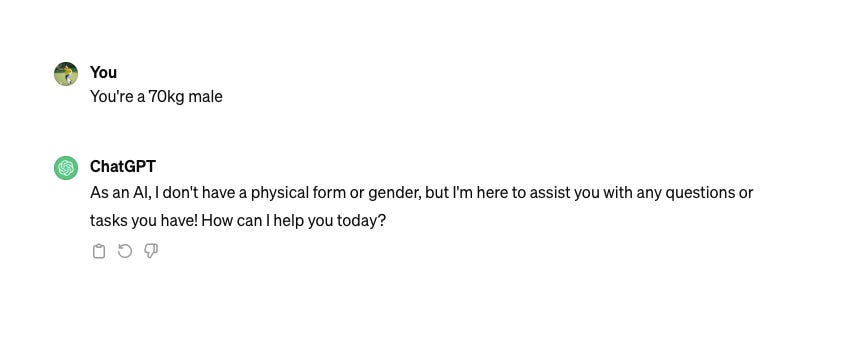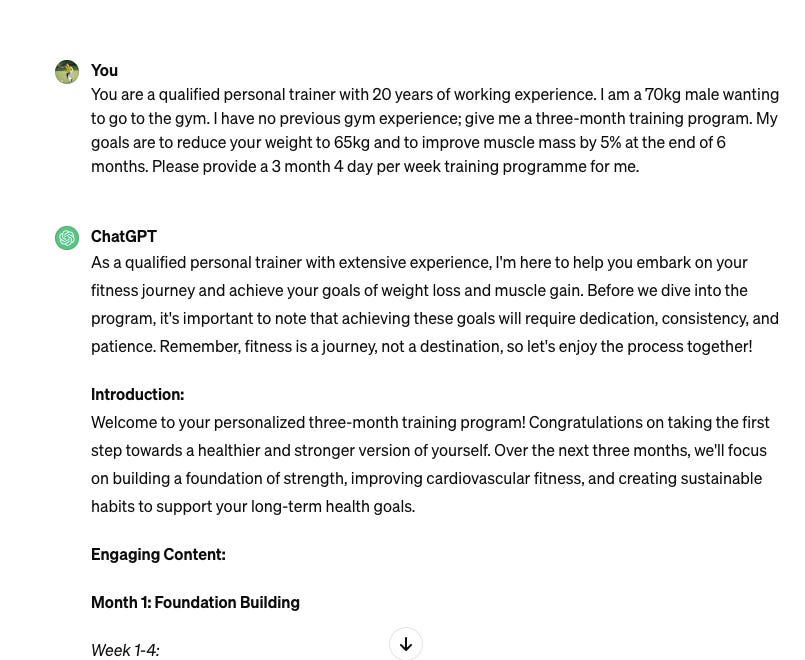Generative Artificial Intelligence (AI) in physiotherapy - How to be better at prompt engineering
Thanks for reading the 8th edition of my newsletter. This newsletter tracks my work to create the best available resource for newly qualified physiotherapists interested in MSK.
Welcome to a new era of innovation in healthcare! Advances in technology, like Generative Artificial Intelligence (GAI), are transforming the field. Generative AI allows computers to learn, think, and communicate like humans, offering immense potential for enhancing various aspects of physiotherapeutic practice.
Understanding AI
Even without coding experience, getting familiar with generative AI now is essential as it becomes increasingly normalised. Generative AI, particularly in the form of Large Language Models (LLMs) exemplified by products like GPT, offers instant access to medical knowledge and expertise, aiding in diagnosis, treatment planning, patient education, and support.
If you are unsure what Chat GPT or AI means then you can refer to the video below:
Mastering Prompt Engineering
Now that we understand how important and powerful generative AI can be. It’s crucial that we are prepared to utilise these tools. Crafting clear and concise prompts is crucial to fully harnessing the power of generative AI. This ensures accurate and relevant responses, optimising the technology's utility in physiotherapy practice.
In this episode, I'm sharing the six building blocks that make up a good prompt, so that you can use this formula to consistently generate high-quality outputs.
The six building blocks are
Task
Context
Exemplars
Persona
Format
Tone
It is important to understand that there's an order of importance to these six components. To illustrate, let's use this simple example: "You're a 70kg male; give me a three-month training program." The first part is context followed by the task.
The reason why the task is higher up in the form of the hierarchy is if you just input the task without the context, there's still some sort of meaningful output, but if you just give ChatGPT the context, nothing happens.
Put it this way
It's mandatory to have a task in your prompt, it's important to include relevant context and exemplars, and it's nice to have persona, format, and tone.
Here are some tips that I have found useful when creating the prompts
Task: Always start the task sentence with an action verb and clearly articulate your end goal. Tasks can range from simple, like generating a three-month training program, to complex, such as analyzing user feedback and categorizing it based on responsible teams.
Context: Crafting context is tricky due to the vast amount of information available. To ensure a good result, consider the user's background, what success looks like, and the environment they're in. Providing just enough information is key to constraining possibilities.
Exemplars: Including examples within the prompt significantly improves output quality. Exemplars can be simple, like a resume bullet point, or more complex, like an interview question response using the STAR framework. While not necessary for every prompt, relevant examples greatly enhance output quality.
Persona: Define the persona you want ChatGPT to embody for the task at hand. This could be a specific profession or individual, real or fictional, who possesses relevant expertise or characteristics related to the task.
Format: Visualise the desired result format, whether it's a table, email, bullet points, or paragraphs. Choose the format that best suits your needs, considering ease of use and readability.
Tone: Specify the tone you want ChatGPT to adopt, whether casual, formal, enthusiastic, or pessimistic. Providing tone keywords helps ChatGPT understand the desired emotional context for the prompt.
When writing your prompt, go down this mental checklist, so this formula will act as a constant reminder for you to include just enough relevant information when writing prompts.
Practical Applications
With a good prompt, you can do anything to boost your productivity! Here are some examples of tasks I've used ChatGPT for:
Crafting resumes
Critiquing essays
Writing letters
Creating rehab programs
Summarizing research
Explaining tough concepts (e.g., Fibromyalgia) to patients
Now that you have a good structure of prompts, try these out and let me know how you get on!
See you next time!
Justin






